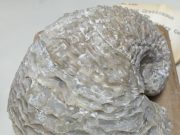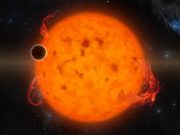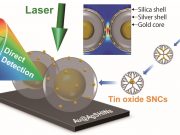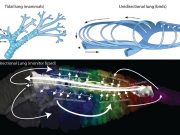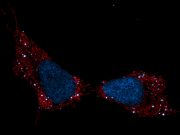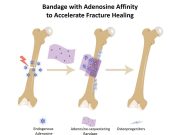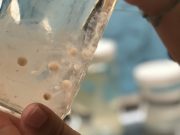Fossil shells reveal both global mercury contamination and warming when dinosaurs perished
The impact of an asteroid or comet is acknowledged as the principal cause of the mass extinction that killed off most dinosaurs and about...
New CRISPR-based system targets amplified antibiotic-resistant genes
Taking advantage of powerful advances in CRISPR gene editing, scientists at the University of California San Diego have set their sights on one of...
Growing carbon nanotubes with the right twist
In a recently published paper in Science Advances, Feng Ding of the Center for Multidimensional Carbon Materials and colleagues have achieved the creation of a...
Researchers discover exoplanets can be made less habitable by stars’ flares
The discovery of terrestrial exoplanets, planets that orbit stars outside the solar system, has been one of the most significant developments in modern astronomy....
How does our Milky Way galaxy get its spiral form?
A question that has long puzzled scientists is how our Milky Way galaxy which has an elegant spiral shape with long arms, took this...
Nanoscience breakthrough: Probing particles smaller than a billionth of a meter
Scientists at Tokyo Institute of Technology (Tokyo Tech) have developed a new methodology that allows researchers to assess the chemical composition and structure of...
Savannah monitor lizards have a unique airflow pattern that is a hybrid of bird...
Take a deep breath in. Slowly let it out.
You have just participated in one of the most profound evolutionary revolutions on Earth—breathing air on...
Mitochondria are the ‘canary in the coal mine’ for cellular stress
Mitochondria, tiny structures present in most cells, are known for their energy-generating machinery. Now, Salk researchers have discovered a new function of mitochondria: they...
Bone bandage soaks up pro-healing biochemical to accelerate repair
Researchers at Duke University have engineered a bandage that captures and holds a pro-healing molecule at the site of a bone break to accelerate...
Newfound Martian aurora actually the most common; sheds light on Mars’ changing climate
A type of Martian aurora first identified by NASA's MAVEN spacecraft in 2016 is actually the most common form of aurora occurring on the...
Microplastics 1 million times more abundant in the ocean than previously thought
Nothing seems safe from plastic contamination. A new study by NSF-funded researchers at the Scripps Institution of Oceanography suggests there could be a million...


